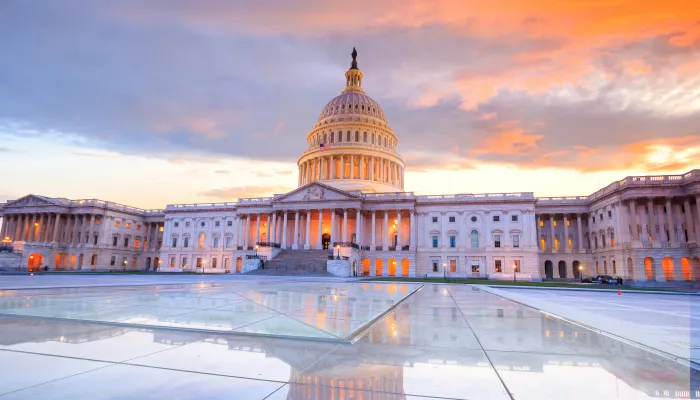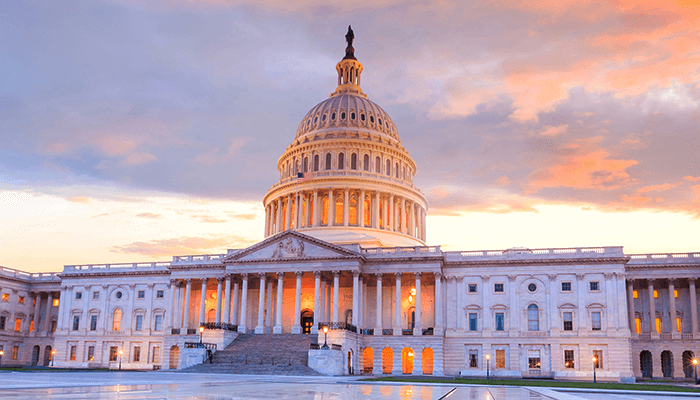Op-Ed: A Real Debt Goal: 60 Percent by 2030
Politico | December 13, 2012
The fiscal cliff obsession in Washington is missing the whole point of fiscal reform: actually solving our national debt problem. Instead of focusing on an arbitrary target in one area of the budget, fiscal reform should build from a comprehensive goal that stabilizes the debt and provides the certainty and confidence needed to restart the U.S. economy.
We hear many ambiguities like “fiscal sustainability,” “getting our fiscal house in order,” and “living within our means.” Even targets that seem specific, like “$4 trillion of deficit reduction over 10 years” are vulnerable to manipulation – much of the so-called “savings” can be meaningless if it is compared to a fictional baseline, such as one that projects future increases in spending in Afghanistan even though we are already drawing down forces.
Let’s put all of the rhetoric aside and agree on a clear fiscal goal: reducing our public debt to 60 percent of our GDP by 2030. Here’s why this objective makes sense:
Debt as a share of GDP is the best way to measure our actual fiscal progress. The bottom line is how much debt we take on, not how much we reduce deficits compared to worse alternatives. And it’s important to understand our debt in relation to the size of our economy – the bigger a nation’s economy is, the more debt it can handle.
Sixty percent is a sensible target endorsed by many budget experts and economists. It was the maximum allowable level of debt for countries originally seeking to join the Euro – don’t they now wish they had held themselves to that standard! Sixty percent also has broad bipartisan support – five ideologically diverse think tanks recommended stabilizing the debt below that level in fiscal plans they submitted to our foundation.
2030 is a time frame that acknowledges we can’t solve our deficits overnight. Why can’t we do it sooner? Our public debt is already more than 70 percent of GDP, and we are currently running trillion dollar deficits that add to that. Yet cutting deficits too quickly would harm the fragile recovery, and economic growth is critical to any successful deficit reduction plan. In addition, it takes time to tackle the key drivers of our long-term debt: the increasing costs of healthcare and the demographics of tens of millions of boomers retiring and living longer. Nearly all structural entitlement reform proposals exempt those 55 and older to give them time to prepare – changes to these vital programs must be done with fairness and compassion. By definition, this delays any impact on the deficit for 10 years, and 2030 is only seven years after that. But this delay also means that we need to agree on a plan now – as Yogi Berra said, “It gets late early out there.”
Our current fiscal outlook is way off course. On our current path, the Congressional Budget Office projects that we will have an interest tab of about $1 trillion per year in 10 years, and that debt will be 140 percent of GDP in 2030. Borrowing anywhere near that much would significantly harm economic growth, diverting capital and crowding out important public and private investments, not to mention risking a catastrophic fiscal crisis for the U.S.
There’s no shortage of policy options to achieve 60 percent by ‘30. Many plans achieve meaningful deficit reduction within the 10-year budget window, but they must be coupled with structural reforms that ensure that we’re on the right trajectory thereafter.
And, assuming our elected leaders really want to solve the problem, it’s entirely possible to agree by the end of the year on a fiscal framework, combined with an expedited legislative process to enact and enforce legislation in 2013. A credible long-term fiscal plan that is agreed upon now, but implemented gradually, would not only put the nation on sound economic footing for the future, but would build the critically needed confidence that today’s economy so desperately needs.
Pretty soon, the fiscal cliff suspense will be over. This self-inflicted fiscal flashpoint has already hurt our fragile economy due to the uncertainty and fear it has imposed on businesses and consumers. On New Year’s Eve, someone will be toasting a political win. But will it be a victory for the country? That only comes once we have a long-term fiscal plan on target for 60 percent by ’30.

